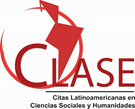La educación y comunicación patrimonial en el Castillo de San Severino. Museo de la esclavitud
Resumen
La comunicación del patrimonio cultural como vía para la socialización del recurso patrimonial que atesoran las instituciones museísticas, se constituye en elemento clave que garantiza la apropiación colectiva y la protección del legado cultural. Como proceso creativo, es capaz de desarrollar vínculos afectivos con el visitante y promover actitudes positivas hacia el patrimonio. En tal sentido, la investigación tiene como objetivo valorar el proceso comunicativo con finalidad educativa en el Castillo de San Severino. Museo de la esclavitud. Deriva del estudio sobre la acción educativa en los museos de la ciudad yumurina y los instrumentos de análisis utilizados derivan del Proyecto Evaluación cualitativa de programas educativos en museos españoles. La investigación se desarrolla a través del estudio de caso y como técnicas se recurre a la entrevista en profundidad y la observación participante. Los resultados demuestran fortalezas derivadas de la profesionalidad del personal de la institución y las debilidades se vinculan a los recursos económicos y tecnológicos. La investigación se considera pionera en el contexto cubano y los resultados contribuyen a mejorar la labor educativa y de socialización de este centro y además, el resultado se constituye en referente para otros museos en el ámbito cubano.
Palabras clave:
comunicación patrimonial, educación patrimonial, patrimonio cultural, recurso patrimonial, socialización.
ABSTRACT
The communication of cultural heritage as a way to socialize the heritage resource treasured by museum institutions is a key element that guarantees the collective appropriation and protection of the cultural legacy. As a creative process, it is capable of developing affective bonds with the visitor and promoting positive attitudes towards heritage. In this sense, the research aims to assess the communicative process with an educational purpose in the San Severino Castle. Slavery Museum. It derives from the study on the educational action in the museums of the city of Yumurina and the instruments of analysis used derive from the Project Qualitative evaluation of educational programs in Spanish museums. The research is developed through a case study and the techniques used are in-depth interviews and participant observation. The results show strengths derived from the professionalism of the institution's staff and the weaknesses are linked to economic and technological resources. The research is considered pioneer in the Cuban context and the results contribute to improve the educational and socialization work of this center and also, the result constitutes a reference for other museums in Cuba.Keywords:
cultural heritage, heritage communication, heritage education, heritage resource, socialization.Descargas
Publicado
Cómo citar
Número
Sección
Licencia
La editorial "Universo Sur", de la Universidad de Cienfuegos, publica el contenido de la Revista "Universidad y Sociedad" bajo una Licencia Creative Commons Atribución-NoComercial-SinDerivar 4.0 Internacional.
© Podrá reproducirse, de forma parcial o total, el contenido de esta publicación, siempre que se haga de forma literal y se mencione la fuente.










